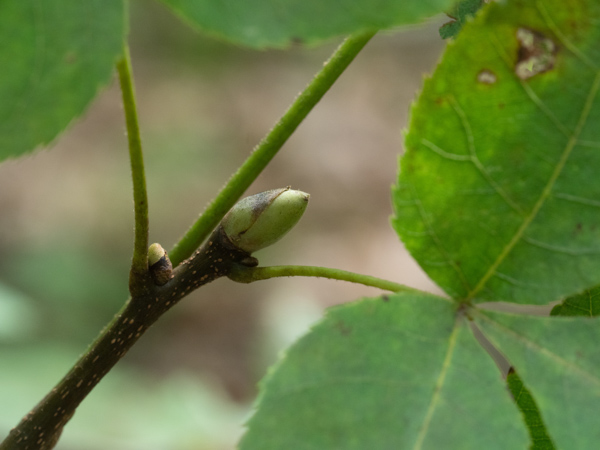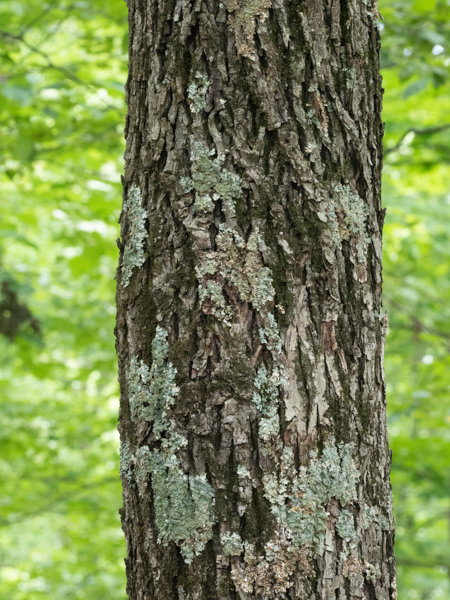pignut hickory (Carya glabra)
Juglandaceae, the walnut family
How to recognize pignut hickory. As members of the walnut family, hickories (genus Carya) have large, alternately arranged, pinnately compound leaves. The number of leaflets is only 5-7 (sometimes up to 9) compared with 11-23 leaflets seen on walnuts (genus Juglans). Pignut is a member of the “true hickories” group–the one with bud scales imbricate (shingled), and to which all but one of our species belong. It stands out by having leaves that are glabrous (hairless) beneath, the basis for the specific epithet glabra. The leaves are smaller than those of the more common true hickory, shagbark (Carya ovata).

pignut hickory
The leaves are of pignut are smaller than those of the more common true hickory, shagbark (Carya ovata). Below, see them growing together on a ridgetop in Vinton County.

shagbark on top, pignut on bottom.
Fruits. The fruits of pignut hickory are described as having “husk smooth, splitting only toward apex, or later to base along one suture, often constricted to stipe-like base.” (E. Lucy Braun in “Woody Plants of Ohio.)
In the winter. Pignut terminal buds are large, with outer scales deciduous, leaving just the inner scales. These are tightly adherent, sometimes finely hairy; the twigs themselves are hairless.

pignut hickory twigs are hairless, with a small terminal bud showing only the inner scales.
Bark. Pignut hickory bark is dark gray and fissured, but not exfoliating.

pignut hickory bark is dark, not exfoliating.
Where to find . E. Lucy Braun, in The Woody Plants of Ohio (1961, 1989; The Ohio State University Press) shows pignut hickory as being restricted to the unglaciated eastern portion of the state.
Scanned Image from an Old Book
(Flora of West Virginia, by P.D. Strausbaugh and Earl L. Core)

Pignut hickory is on the left.
Ooh ooh, I have a question.
What is the meaning of the specific epithet glabra?
It means glabrous, i.e., hairless.
